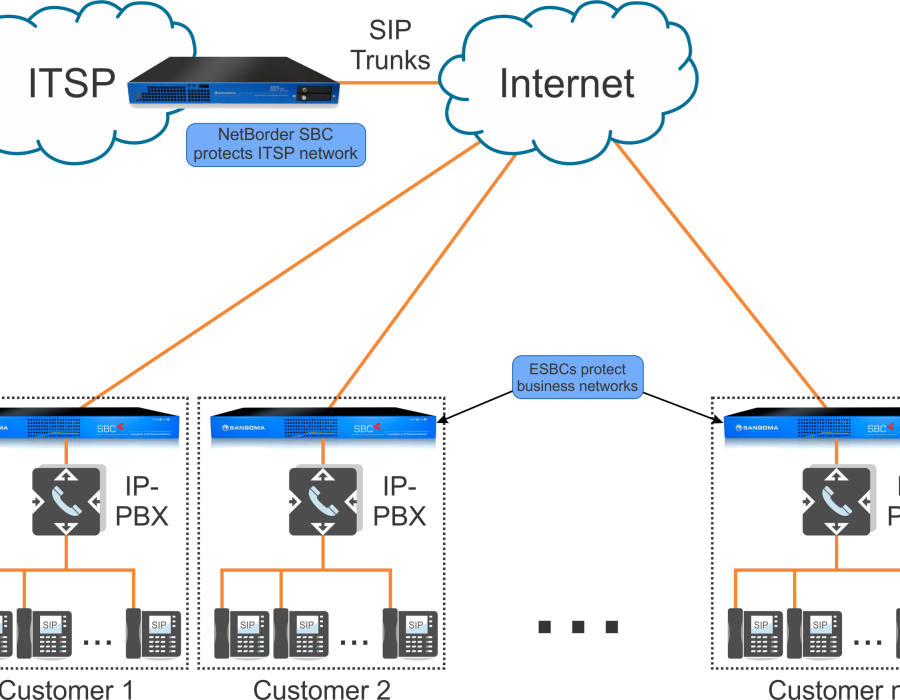Introduction
The Internet of Things (IoT) has revolutionized the way devices communicate and interact with each other, leading to increased efficiency and convenience in various aspects of daily life. One crucial aspect of enabling seamless communication among IoT devices is through Session Initiation Protocol (SIP). In this article, we delve into the significance of SIP in IoT and explore how it facilitates the smooth connectivity of devices. Furthermore, we'll examine the role of SIP trunk service in enhancing communication within IoT ecosystems.
Understanding SIP in IoT
Session Initiation Protocol (SIP) serves as a cornerstone in enabling communication over the internet. Initially developed for multimedia communication sessions such as voice and video calls, SIP has evolved to accommodate the diverse requirements of IoT applications. At its core, SIP establishes, modifies, and terminates communication sessions between devices, making it an ideal protocol for IoT environments where seamless connectivity is paramount.
Key Features of SIP in IoT
- Interoperability: SIP promotes interoperability among heterogeneous devices within an IoT ecosystem. Regardless of the underlying hardware or communication protocols, SIP facilitates communication by standardizing session initiation and management.
- Scalability: As IoT deployments continue to expand, scalability becomes a crucial consideration. SIP's decentralized architecture allows for the seamless addition of new devices, ensuring that IoT networks can grow dynamically to accommodate increasing demands.
- Flexibility: SIP offers flexibility in terms of communication modes and media types. Whether it's transmitting sensor data, initiating voice commands, or streaming multimedia content, SIP adapts to diverse communication requirements within IoT applications.
- Reliability: In mission-critical IoT deployments, reliability is non-negotiable. SIP incorporates mechanisms for fault tolerance and redundancy, ensuring that communication remains robust even in challenging network conditions.
The Role of SIP Trunk Services
In addition to facilitating device-to-device communication, SIP trunk services play a pivotal role in connecting IoT environments to external networks, such as the public switched telephone network (PSTN) or Voice over Internet Protocol (VoIP) networks. By leveraging SIP trunking, IoT deployments can extend their reach beyond local boundaries and integrate with existing communication infrastructures seamlessly.
Benefits of SIP Trunk Services for IoT
- Global Reach: SIP trunk services enable IoT devices to establish communication channels with endpoints across the globe. This global reach is essential for IoT applications with geographically dispersed assets or users.
- Cost Efficiency: Traditional communication methods incur significant costs, especially for long-distance or international calls. SIP trunk services offer cost-efficient alternatives by leveraging IP networks for voice and data transmission, resulting in substantial savings for IoT deployments.
- Scalability: Just as SIP promotes scalability within IoT environments, SIP trunk services scale effortlessly to accommodate growing communication demands. Whether it's adding new communication channels or expanding bandwidth capacity, SIP trunking adapts to evolving requirements seamlessly.
- Quality of Service (QoS): Maintaining high-quality communication is paramount in IoT applications, particularly those involving real-time interactions or critical data transmission. SIP trunk services prioritize QoS parameters, such as latency, jitter, and packet loss, to ensure optimal performance across diverse communication channels.
Challenges and Considerations
While SIP offers numerous benefits for IoT connectivity, several challenges and considerations warrant attention:
- Security: Protecting IoT communication against unauthorized access and malicious attacks is paramount. Implementing robust security measures, such as encryption and authentication mechanisms, is essential to safeguard SIP-based IoT deployments.
- Interoperability: Ensuring interoperability among different SIP implementations and IoT devices from various manufacturers can be challenging. Standards adherence and rigorous testing are necessary to mitigate interoperability issues and ensure seamless communication.
- Bandwidth Management: IoT deployments generate vast amounts of data that traverse SIP trunks. Effective bandwidth management strategies are crucial to optimize network resources and prioritize critical communication flows within IoT ecosystems.
- Regulatory Compliance: Compliance with regulatory requirements, such as data privacy regulations and telecommunications laws, is imperative for SIP-based IoT deployments. Adhering to relevant standards and regulations ensures legal and ethical operation within the IoT landscape.
Conclusion
In conclusion, SIP plays a vital role in enabling seamless connectivity among IoT devices, facilitating efficient communication and interaction within IoT ecosystems. With its interoperability, scalability, and flexibility, SIP serves as a foundational protocol for realizing the full potential of IoT deployments. Furthermore, SIP trunk services extend the reach of IoT environments, connecting them to external networks and enabling global communication capabilities. By addressing challenges such as security, interoperability, and regulatory compliance, organizations can leverage SIP effectively to build robust and interconnected IoT solutions that drive innovation and efficiency in the digital era.






Comments